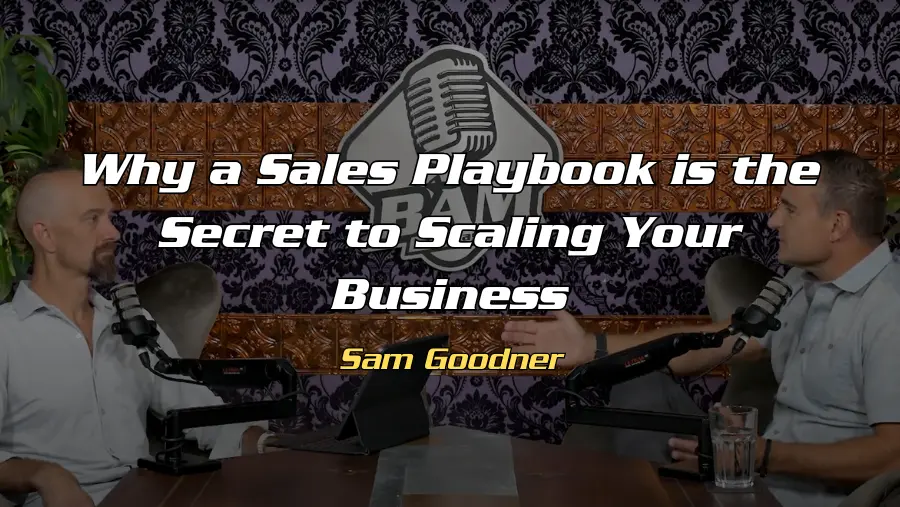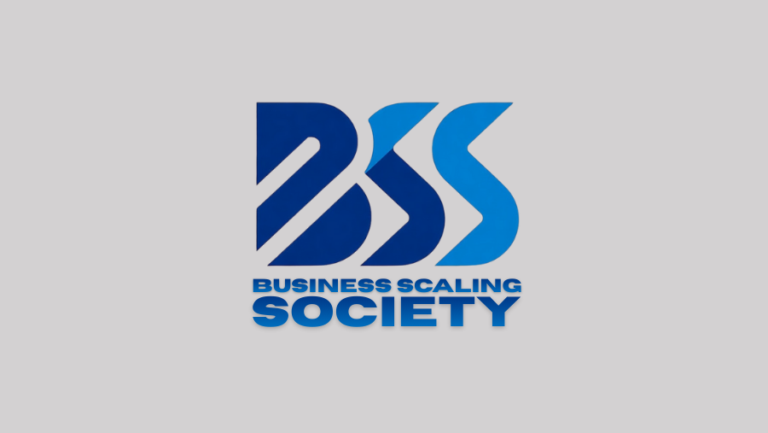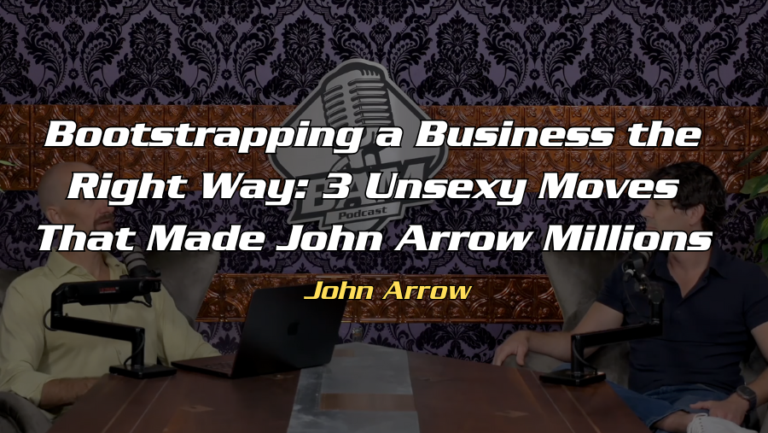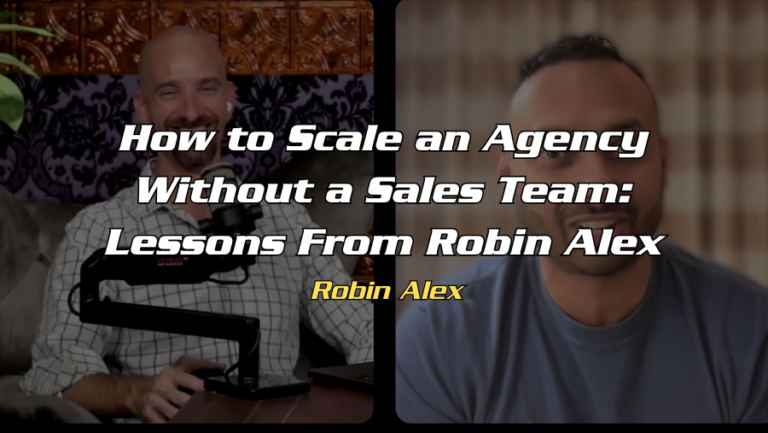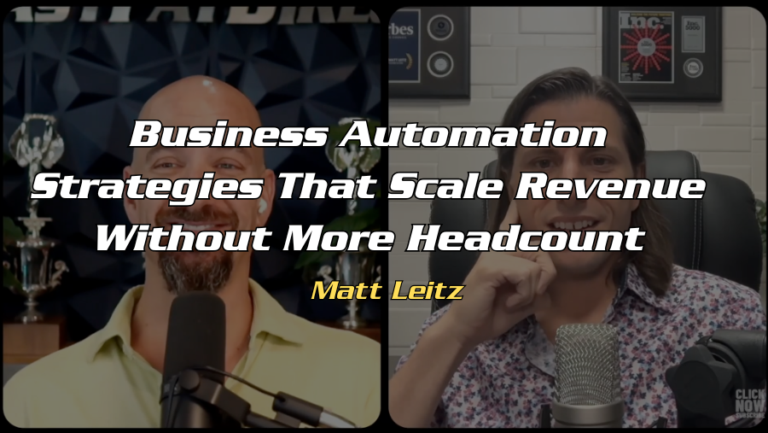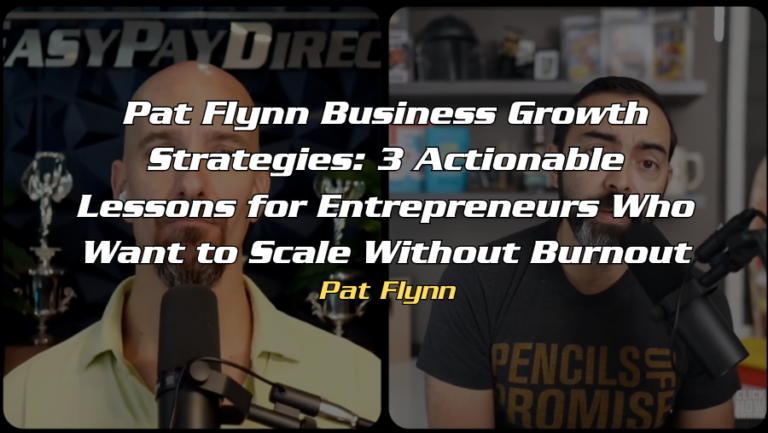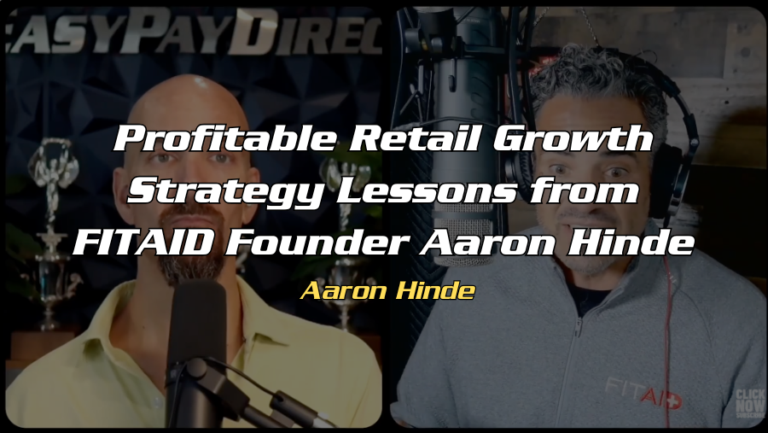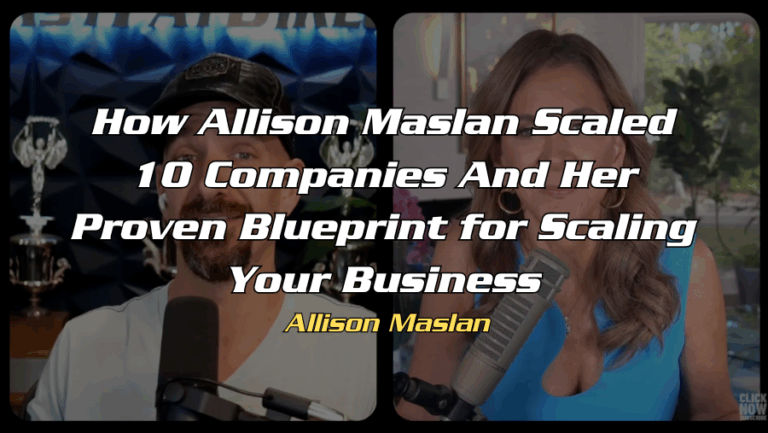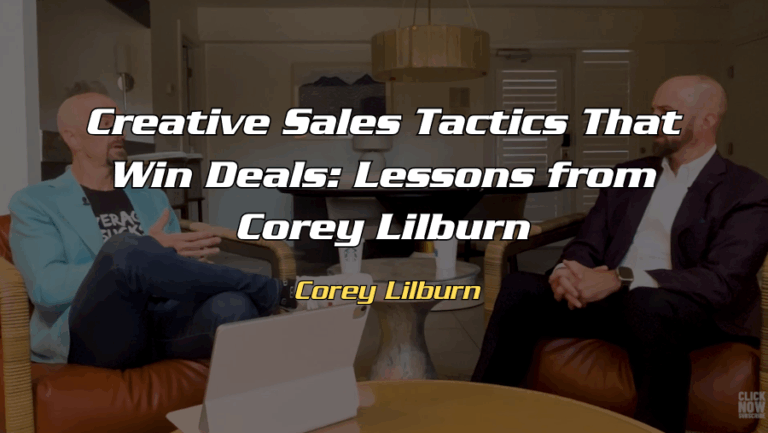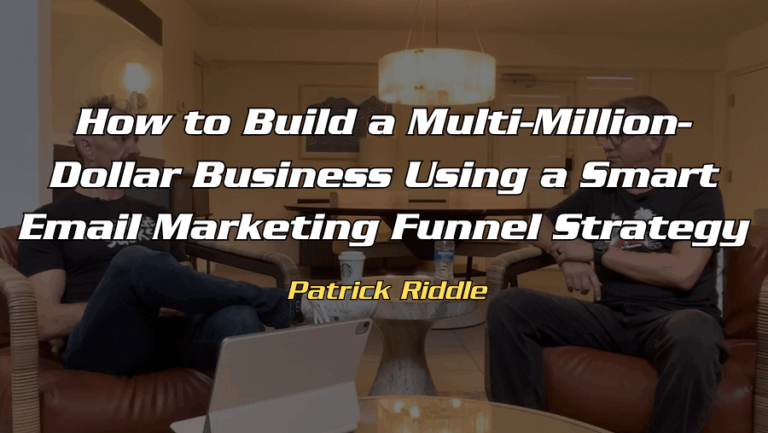Sam Goodner knows a thing or two about scaling companies. He’s a serial entrepreneur, angel investor, and mentor who has spent three decades building and growing businesses. He founded Catapult Systems, growing it into Microsoft’s top global partner before selling in 2013, and later helped Flash Parking scale from $3M to a billion-dollar valuation. Today, he mentors founders at Capital Factory, shares hard-won lessons on building businesses that run without their founders, and captures his approach in his book, Like Clockwork – Run Your Business with Swiss Army Precision
In his conversation on the Beyond a Million podcast, Sam laid out some of the most practical strategies for growth, starting with the importance of a sales playbook. As he put it, “If you want to scale any business, it starts with sales, period… you have to build a sales playbook… If you don’t actually put that in a playbook and write it down, then you can’t actually go hire another salesperson, let alone build a sales team.”
This is just one piece of what Sam shared during his interview. If you want to hear the full story and dive deeper into the mindset and tactics that helped him scale multiple ventures, tune into his full episode on the Beyond a Million podcast.
What does a sales playbook look like in practice? Think of it as the instruction manual for how your company wins business. It should document:
- Who you’re targeting and how to find them.
- The decision-maker’s title and pain points.
- The exact words and frameworks your best salesperson (often you) uses to spark interest.
- The most common objections and the most effective responses.
- The sequence of steps from first contact through to the close.
Without this written guide, your growth is capped by your own time and ability to sell. With it, you can hire reps, train them fast, and ensure they follow a proven process that works. The sales playbook is the first step in moving from hustling founder to scalable CEO.
How to Turn Skeptics into Buyers with Cloud Conversion Therapy
Once the playbook was built, Sam and his team wanted to make sure they could close big deals consistently. They designed a strategy so effective that it flipped almost every prospect they ran through it. They called it cloud conversion therapy.
Sam explained: “We devised this strategy… we call it cloud conversion therapy”, a carefully orchestrated experience where prospects would fly in and spend the day fully immersed in the product and culture. “Leave nothing to chance,” he said, describing how they created an end-to-end experience that showed prospects exactly how things worked, while addressing every unspoken objection.
The genius of cloud conversion therapy was in its design. Prospects weren’t just shown a PowerPoint or given a sales pitch. They were guided through a complete journey that included:
- Hands-on use of the product or service.
- A walk-through of the operations team, so they could see the competence behind the curtain.
- Case studies and success stories presented in person by existing clients.
- Time with leadership and culture-building moments that built trust and credibility.
By the end of the day, prospects weren’t just convinced, they were excited. The results spoke for themselves: “100% of the customers we brought through that program ended up becoming customers.”
If you want to replicate this in your own business, ask yourself: what objections keep prospects from buying, and how can you design a curated experience that knocks them down one by one? Maybe it’s an in-person demo, a virtual immersion day, or a behind-the-scenes look at your process. The key is intentional design and controlling the environment so you can flip skepticism into confidence.
Recession-Proofing with Diversification and Guardrails
Sam also shared hard-earned wisdom on building a company that can withstand downturns. He learned that growth is exciting but protecting the downside is what keeps you in the game long enough to win big.
One of the smartest moves his company made was building a recurring revenue stream. “We created a managed services part of our business that had recurring revenue. Love recurring revenue.” That recurring piece wasn’t flashy, but it provided steady income they could count on month after month, no matter what was happening in the economy.
He also enforced strict client concentration rules. “We made sure… no single customer was ever more than 5% of our total revenue. Hard, fast rule.” That one policy kept the company safe from disaster. Losing a major client is painful, but if that client makes up 30–40% of your business, it can cripple you. With a 5% cap, no single loss could take the company down.
Finally, they always kept a cash cushion. “We always had three months of cash and credit, a runway…” That buffer allowed them to weather downturns, slow client payments, or unexpected expenses without panicking. It gave them time to think strategically instead of reacting emotionally.
It All Comes Back to the Sales Playbook
At the heart of Sam’s story is a simple truth: scaling without a sales playbook is nearly impossible. The playbook enables you to teach, replicate, and expand your sales engine. Strategies like cloud conversion therapy, supercharge conversion, and financial guardrails keep the company steady through recessions.
In Sam’s own words: “If you want to scale any business, it starts with sales, period.” And the best way to start? Write the playbook.
If you’re hungry for more proven strategies from entrepreneurs who’ve scaled to 8, 9, and even 10 figures, subscribe to the Beyond a Million podcast. You’ll hear the full episode with Sam Goodner plus dozens of other conversations packed with tactics you can apply to your own business.

